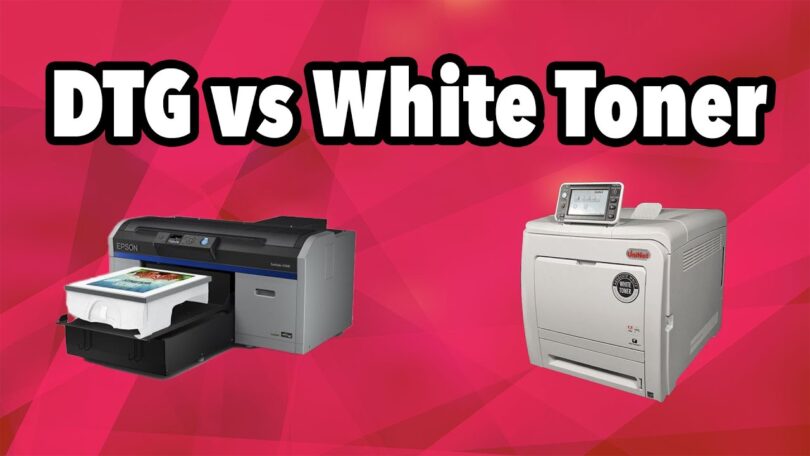When it comes to printing on fabrics and textiles, there are several options available, including DTF (Direct-to-Film) printing, DTG (Direct-to-Garment) printing, and White Toner printing. While these printing methods all have their unique advantages and disadvantages, they differ significantly in their technology and processes. In this article, we will discuss the differences between DTF, DTG, and White Toner printing.
DTF Printing
DTF printing is a digital printing method that uses a specialized film as a transfer medium. The film is printed with a design using a DTF printer, and then the design is transferred onto the fabric using a heat press. DTF printing has several advantages over traditional screen printing, including the ability to produce high-quality prints with intricate designs and gradients. It is also a cost-effective solution for small to medium-sized businesses that want to produce custom apparel and merchandise.
One of the primary benefits of DTF printing is that it allows for the use of white ink as an underbase, which provides more vibrant and accurate colors on darker fabrics. The white ink is printed first, followed by the CMYK inks. The film is then placed onto the fabric with the printed side facing down, and a heat press is used to transfer the design onto the fabric.
DTG Printing
DTG printing is another digital printing method that uses specialized inkjet technology to print designs directly onto the fabric. DTG printers are similar to traditional inkjet printers, except they are designed to print on textiles instead of paper. DTG printing offers several advantages, including the ability to produce high-quality prints with intricate details and colors.
One of the primary benefits of DTG printing is that it allows for the use of white ink, which is necessary for printing on dark fabrics. DTG printers use a special white ink that is printed first, followed by the CMYK inks. The ink is then cured onto the fabric using a heat press.
White Toner Printing
White Toner printing is a digital printing method that uses specialized printers that use white toner instead of black toner. White Toner printers are similar to traditional laser printers, but they have additional toner cartridges for white and clear toner. White Toner printing offers several advantages, including the ability to print on dark fabrics without the need for an underbase.
One of the primary benefits of White Toner printing is that it allows for the use of white toner as an underbase, which provides more vibrant and accurate colors on darker fabrics. The white toner is printed first, followed by the CMYK toners. The toner is then transferred onto the fabric using a heat press.
Differences Between DTF, DTG, and White Toner Printing
The following are the main differences between DTF, DTG, and White Toner printing:
- Printing Technology: DTF printing uses a specialized film as a transfer medium, while DTG and White Toner printing use specialized printers that print directly onto the fabric.
- Ink/Toner: DTF printing uses CMYK and white ink, DTG printing uses CMYK and white ink, and White Toner printing uses CMYK, white toner, and clear toner.
- Underbase: DTF printing and White Toner printing require an underbase of white ink/toner to ensure vibrant and accurate colors on darker fabrics, while DTG printing requires an underbase of white ink.
- Printing Quality: DTF printing offers high-quality prints with intricate details and gradients, while DTG and White Toner printing offer high-quality prints with vibrant colors.
- Printing Costs: DTF printing is generally more cost-effective than DTG and White Toner printing, especially for smaller runs of custom apparel








Leave a Comment
You must be logged in to post a comment.